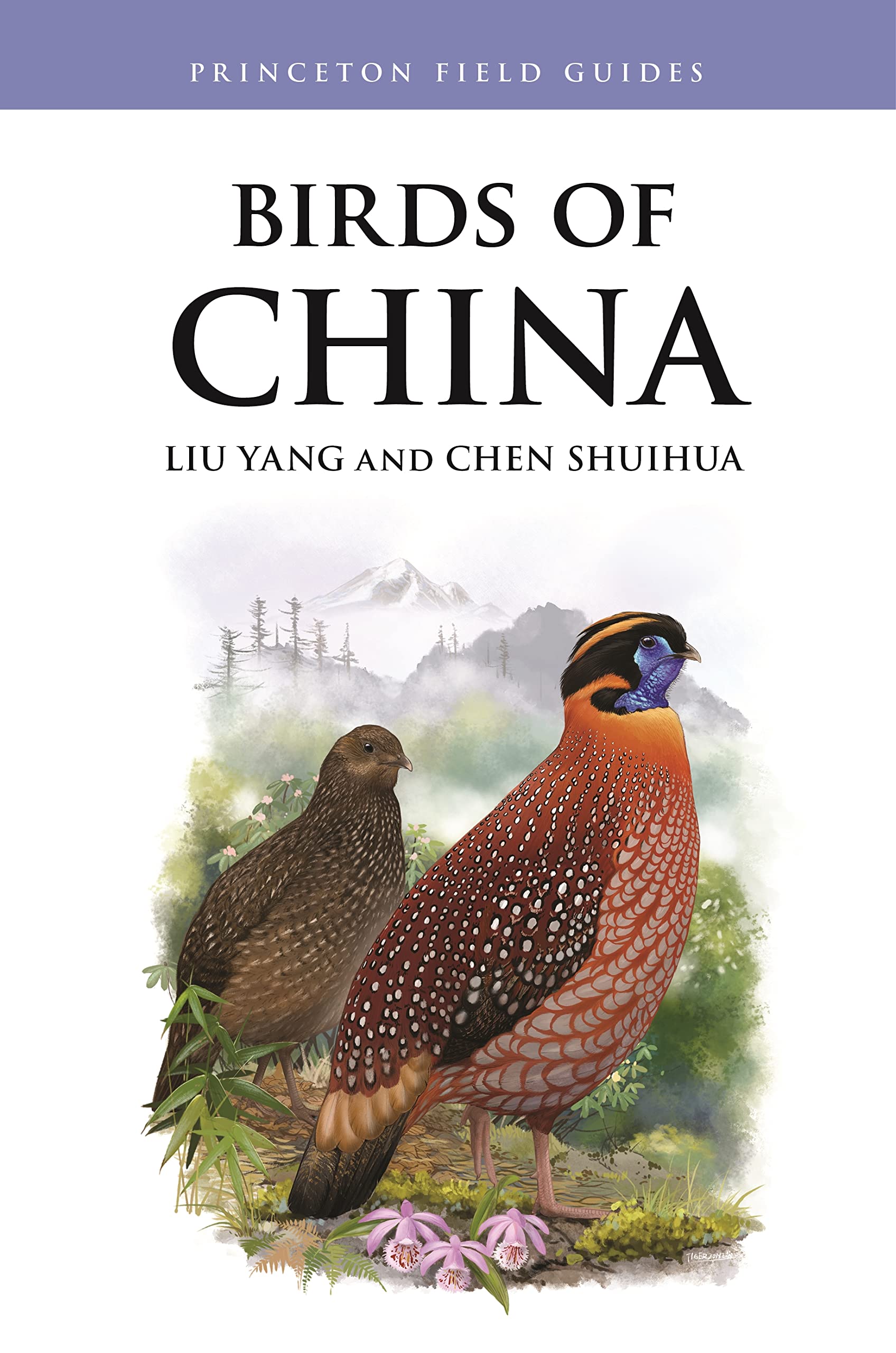

Birds of China
L**W
Hard to read because of incorrect font and heading colors
So disappointing. I was so looking forward to this book. The paintings of the birds on plates were great. However, the poor choice of font (narrow. and small) and heading colours (white against pastel colours) and pastel colours used on maps made it difficult to read even with a magnifying glass. Sigh! Returned book and hoping better production of a Helm guide in the future. I have read and own a lot of Helm guides, but this one had the poorest production values.
A**R
first impression: breath-taking!
Just opened it. Twenty-nine pages of front matter. Twenty-nine pages of back matter. And the other 614 pages are birds and maps and birds and birds and birds. Have to leave technical reviews to the experts, but as bookcase candy it's outstanding.Softbound cover is typical "field" cover.
A**P
Top
Top
G**S
Excellent condition
Book came in excellent condition.
A**R
Study this one, don't carry it
This is a beautiful effort, for the most part quite successful as a study and reference book on the entire country of China (it includes Taiwan as well). As a field guide, those who find weight to matter will not want to take it far because it is very heavy. Bird names have Chinese characters and names on the species accounts.As a study/reference guide, the book has numerous features that will help intermediate birders learn more about families and genera, including introductory family accounts that include one image of each genus in the family. Sometimes this means that there are two images of the same bird on one page, one illustrating a genus in the family and the other the individual species account (see Sylviidae and Eurasian Blackcap), which can be confusing. There are quite a few pages of introductory material, but amazingly, no introductory maps of China showing topography, general habitat types, or even political boundaries. Each species map shows 3 (or maybe 4...they are so light that it's difficult to see) major rivers, and the outline of China. The font on the species accounts is extremely small and very light, such that my 70 year old eyes can barely read it (and believe me, I am exactly the market for this type of book).The book follows the confusing practice of having an index for common names and a second one for scientific names, which in my opinion simply adds to the time to find a bird. To offset this, a pictorial index of families or groups is in the back of the book, with small images of representative species in a family but omitting the name of the family.The images are almost all beautifully done and show important field marks, with pointed annotations. The annotations are helpful, although some are relative ('darker breast') which requires one to know what is being compared but with few exceptions do not say so. Illustrations are sometimes quite dark, and sometimes off-color. For example, the rosefinches are quite variable in being over-darkened, too orange or red, and sometimes conceal important field marks like rump color. The majority of illustrations are done very well, with appropriate postures and good color. It is a joy to thumb through the book just to see the variety and beauty of China's birds.The scale of the birds on the plates is quite variable, apparently related to the size of the written account on the left facing page. Most strike that good compromise between too crowded and small, or too large and wasting space (and adding weight to the book). I would have liked to see more birds in flight, and especially those comparison plates of raptors or waterfowl in flight, because both those groups have very different ID requirements in flight vs perched.The format of the images is directly across from the narrative account, which makes a rapid find, and the maps are attached to each species account. The species accounts have sections for length in cm, habitat, distribution, behavior and voice. All ID information is in the annotations on the illustrations. The maps are clear but very light, and reasonably easy to tell where distributions are if the species you're looking at resides close to one of the rivers. The distribution part of the narrative is helpful in interpreting them. (An alternative approach to maps in Mackinnon's new Guide to the Birds of China puts so many reference lines on tiny maps as to make it nearly impossible to find any location.)Overall, a slightly less than excellent field guide, but a book to have in your bird guide collection to whet your appetite for China's great diversity of birds. If you're anticipating a trip to China, I would recommend it, but also see Mackinnon's new Guide to the Birds of China. Both books are the most recent (English) on China's birds, this one being brand new in 2024, and Mackinnon's in 2022.
Trustpilot
1 month ago
1 month ago